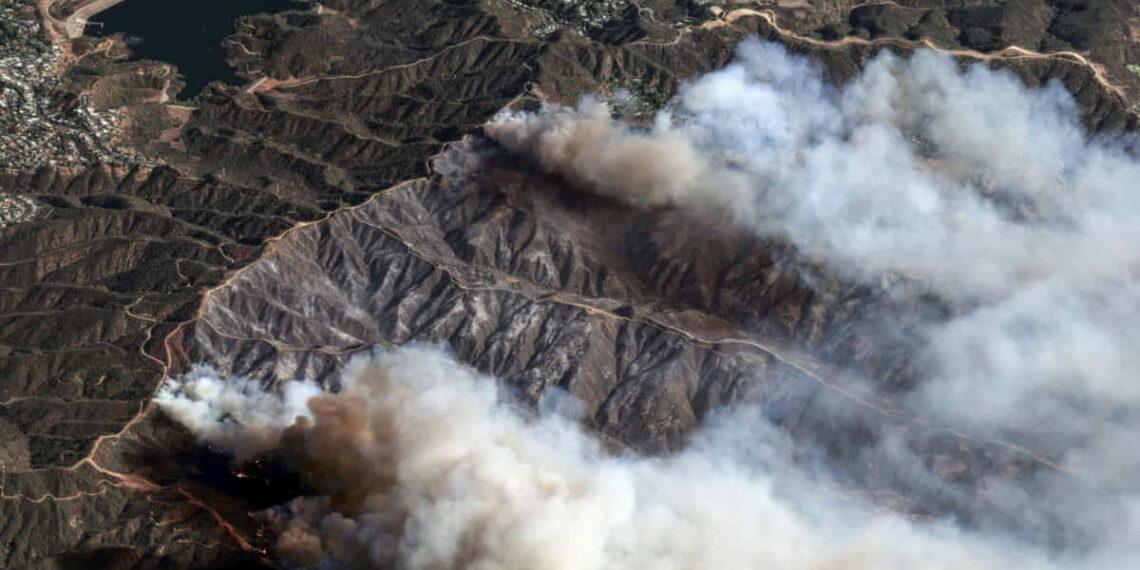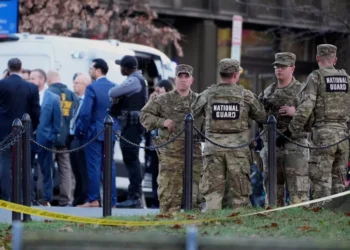Firefighters Battle Wildfires in Los Angeles as Menacing Winds Threaten to Worsen the Blaze
Firefighters Race Against Time
Firefighters in Los Angeles worked urgently Saturday to contain wildfires threatening some of the city’s most iconic landmarks, including the J. Paul Getty Museum and UCLA, before strong winds return. These gusty winds, known for fanning the flames, could rapidly spread the fires toward densely populated areas.
A fierce firefight was underway in Mandeville Canyon, home to celebrities like Arnold Schwarzenegger. Helicopters dropped water while ground crews used hoses to fight the flames as thick smoke enveloped the hillside.
Palisades Fire in Focus
CalFire Operations Chief Christian Litz emphasized that the Palisades Fire, near the UCLA campus, was the primary concern. “We need to be aggressive out there,” Litz said. As the fire advanced northeast, Los Angeles County Supervisor Lindsey Horvath described the night as one of “unimaginable terror,” with more evacuations ordered as the flames expanded.
Wind-Driven Destruction Looms
While light breezes fueled the flames, the National Weather Service warned that Santa Ana winds, notorious for intensifying wildfires, could soon return. These winds, combined with months of drought, have transformed the fire into a massive threat, potentially encroaching on nearby neighborhoods, including those in the Hollywood Hills and San Fernando Valley.
A Grim Search for Victims
As of Saturday, rescue teams continued searching through the wreckage with cadaver dogs. Los Angeles County Sheriff Robert Luna confirmed the grim task, stating that a Family Assistance Center had been established in Pasadena for residents affected by the fires. Authorities have stressed that people should avoid returning to fire zones, urging compliance with curfews for safety.
With over 56 square miles burned, including 12,000 structures, authorities are still assessing the destruction, and the wildfires remain the largest disaster the state has faced in years. Early damage estimates place the fires as the costliest in U.S. history, with losses ranging from $135 billion to $150 billion.
Community Support Amid Crisis
In the face of such devastation, volunteers gathered in droves to assist those in need. Donation centers were overwhelmed, and at Santa Anita Park, evacuees could be seen sifting through piles of donated supplies. One resident, Jose Luis Godinez, spoke of losing his entire family’s homes, stating, “Everything is gone.”
Warnings Against Returning to Burned Homes
Authorities urged residents not to return to burned homes to search for salvageable items, as the ash left behind could contain toxic substances like lead, arsenic, and asbestos. Once damage assessments are complete, residents will be allowed to return with protective gear.
Leadership and Political Blame
As the fires wreak havoc, political finger-pointing has begun. Governor Gavin Newsom ordered an investigation into why a 117-million-gallon reservoir was out of service and why some fire hydrants ran dry. Meanwhile, Los Angeles Fire Chief Kristin Crowley criticized city leaders for insufficient firefighting funds, including the lack of reliable water sources. “When a firefighter comes up to a hydrant, we expect there’s going to be water,” she said.
Rising Death Toll
The fires have claimed at least 11 lives, with authorities fearing the number could rise as the search for missing persons continues. Officials have set up a center for people to report the missing. Five victims have been confirmed dead in the Palisades Fire, while six others lost their lives in the Eaton Fire.
Progress on Eaton Fire
In a rare piece of good news, firefighters made progress against the Eaton Fire, which has already destroyed over 7,000 structures north of Pasadena. Officials lifted many evacuation orders for the area, signaling some containment of the blaze.
The Devastating Impact of the Fires
As Los Angeles Mayor Karen Bass grapples with this unprecedented crisis, smaller fires have been brought under control, offering some hope. Yet, the scale of devastation is staggering, even for a state accustomed to large-scale wildfires. The situation remains dire as officials continue to battle the fires and assess the damage.
This article was rewritten by JournosNews.com based on verified reporting from trusted sources. The content has been independently reviewed, fact-checked, and edited for accuracy, neutrality, tone, and global readability in accordance with Google News and AdSense standards.
All opinions, quotes, or statements from contributors, experts, or sourced organizations do not necessarily reflect the views of JournosNews.com. JournosNews.com maintains full editorial independence from any external funders, sponsors, or organizations.
Stay informed with JournosNews.com — your trusted source for verified global reporting and in-depth analysis. Follow us on Google News, BlueSky, and X for real-time updates.














